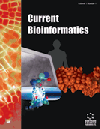
Full text loading...
We use cookies to track usage and preferences.I Understand
Breast Cancer (BC) is a significant cause of high mortality amongst women globally and probably will remain a disease posing challenges about its detectability. Advancements in medical imaging technology have improved the accuracy and efficiency of breast cancer classification. However, tumor features' complexity and imaging data variability still pose challenges.
This study proposes the Ensemble Residual-VGG-16 model as a novel combination of the Deep Residual Network (DRN) and VGG-16 architecture. This model is purposely engineered with maximal precision for the task of breast cancer diagnosis based on mammography images. We assessed its performance by accuracy, recall, precision, and the F1-Score. All these metrics indicated the high performance of this Residual-VGG-16 model. The diagnostic residual-VGG16 performed exceptionally well with an accuracy of 99.6%, precision of 99.4%, recall of 99.7%, F1 score of 98.6%, and Mean Intersection over Union (MIoU) of 99.8% with MIAS datasets.
Similarly, the INBreast dataset achieved an accuracy of 93.8%, a precision of 94.2%, a recall of 94.5%, and an F1-score of 93.4%.
The proposed model is a significant advancement in breast cancer diagnosis, with high accuracy and potential as an automated grading.

Article metrics loading...

Full text loading...
References


Data & Media loading...

